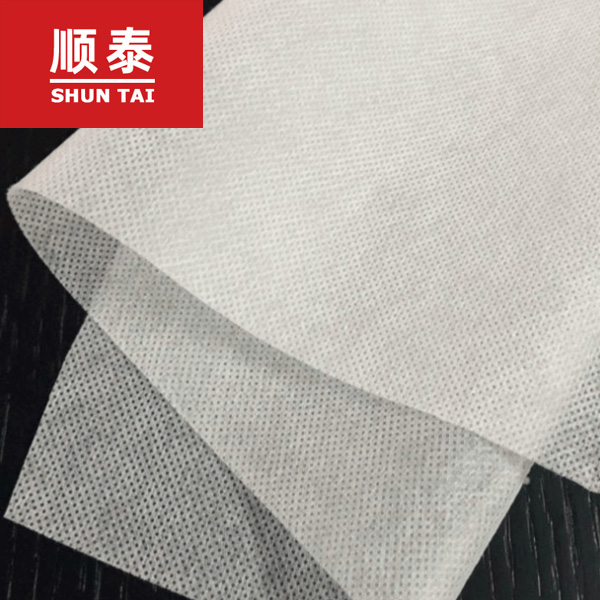
Non-woven Industry Development Non-woven fabric is a product that came out of the petrochemical sector following the invention of plastic cloth (film). As compared to plastic cloth it is more light-weight and offers good ventilation. It is used extensively in personal and medical hygiene items, such as filters, facial towels, and sanitary napkins. The technology was further developed and later applied to engineering. Non-woven fabric is used to protect vegetables from cold damage. Non-woven fabrics are made differently from plastic film. But the fundamental ingredients employed in their manufacture are nearly identical. This includes PVC (polyvinyl chloride), PE (polyethylene), EVA (Ethylene Vinyl Acetate copolymer), PVA (polyvinyl alcohol), and other such items. The standard film made of plastic is created by melting the plastic and after that inflating it. The film is continuous. The material is able to stretch indefinitely. It is smooth and has no pores. It is inert, and it blocks all movements and exchanges of molecules. Artificial chemical fibers derived from these sources were the preferred choice of the textile trade after the growth of the textile manufacturing industry. But, these fibers can still be made into cloth using traditional weaving techniques, either weft or warp. In contrast to traditional warp and weft methods non-woven materials are created by interweaving fibers that originate from various directions. This material has better material properties than traditional weaved fabrics. It can also be produced in one process, from raw materials to final products. The traditional method of drawing and weaving fibers is eliminated. Production costs are also lower. Non-woven fabrics are widely used in the apparel industry in recent years. Due to the advances in material science, and the advancement of and implementation of production technology nonwoven fabrics are becoming more diverse and are utilized more extensively. There are a variety of items and materials everywhere you go in your everyday life. Non-woven fabrics are becoming more popular in agriculture due to their easy production, lightweight, flexibility as well as their low price and numerous applications. Follow this non woven landscape fabric for more info.

Non-woven Fabrics in the Agricultural Industries. Non-woven fabrics first came into use in Europe in 1978. They were made to keep the carrots warm during the early stages of harvesting, and to prevent whiteflies and tomato leaf virus. In the United States non-woven fabrics are employed to mulch sweet peppers, cantaloupes tomatoes, root vegetables, carrots and radishes, cabbage lettuce, and many other vegetables. They are used to conserve heat, promote early harvesting, and control insects. Non-woven materials are often used to cover surfaces, such as grass-proof mats. Short fiber is also used for the production of water absorbent blankets that are affixed to nursery beds to allow the roots to completely absorb water. They can also be used as the base medium for turf production or as lawn grass to moisten drain, divide, and spruce up the garden. They can also be used as planters to shield large woody plants, such as gardens or fruit trees, and retain water. In Taiwan as well as the previously mentioned purposes Non-woven fabrics are also utilized in crop protection. They are also extensively used to control the environment of large greenhouses in order to conserve energy. Double-layered cover and canopy curtains cut down on heat radiation and solar radiation in the evening. At first, TAVIK non-woven spun-bonded TAVIK fabrics of high density were utilized to shade and shield cauliflower bulbs. Due to its excellent shading capacity, low thermal conductivity, and simple recycleability, it quickly welcomed by farmers. It eventually was used to preserve and protect leaf vegetables from insects as well as shade the trees and plants of fruit trees. Due to Taiwan's unique climate and ecology the growth of the industry of non-woven textiles is slow. Taiwanese nonwoven fabric manufacturers continue to develop nonwoven technology. The focus of Taiwan nonwoven fabric manufacturing is water absorption air permeability, as well as water repellency. The focus is now on the preservation and storage of agricultural products. Follow this pp agricultural nonwoven fabric for more information.
